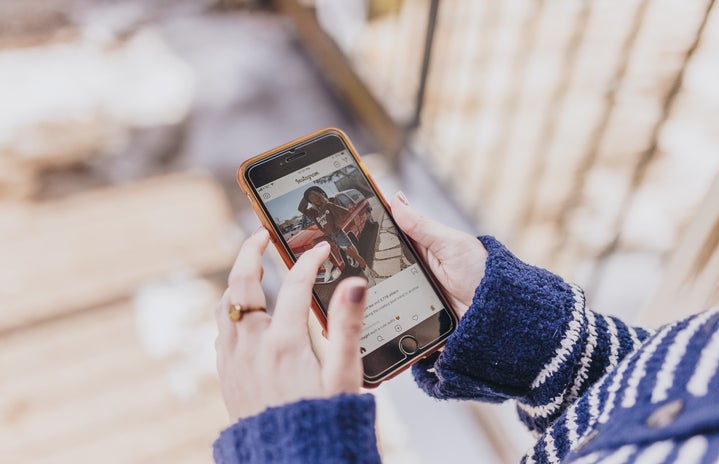To quote fashion superstar Heidi Klum, “In fashion, one day you’re in, the next day you’re out.” A phrase could not more perfectly describe the recent phenomenon of microtrends.
A microtrend is a specific, prevailing aesthetic or item that usually lasts between three and six months, sometimes even less. This fast-paced trend cycle has led to overconsumption and fast fashion becoming even more popular since the pandemic in 2020.
Fashion trends tend to run in 20-year cycles. For example, the early 2000s vibe has taken over the 2020s with full force. With that comes the return of trends, like low-rise jeans and dresses over jeans in the Y2K era.
Now with the growing influence of social media in our lives since the COVID-19 pandemic began, the trend cycle has grown shorter. COVID-19 left much of the population in isolation, which lead to the increased usage of social media like Tik Tok and Instagram. Because Tik Tok and Instagram provide a platform for anyone to become an influencer, the apps create competition between users to promote the best, newest, and freshest content. TikTok user @thealgorythem even compared microtrends to a form of entertainment.
The first major microtrend that Tik Tok popularized was the House of Sunny Green Hockney Dress. It was as if everyone’s feeds were cluttered with influencers reviewing this dress. From small creators with less than 1,000 followers to those with over a million, everyone had it. If they didn’t have this dress they had a less expensive rip-off version of it.
As the pandemic continues, more microtrends are becoming relevant. Right now, mini Uggs have a chokehold over influencers and consumers. Hannah Breslau, a sophomore public policy major, has been seeing mini Uggs everywhere. “I feel like I’m seeing a lot of them. And then also on TikTok, I’m seeing a lot of them, but also people trying to find dupes of them,” she said.
In the past, trends have been derived from upscale designers. Meryl Streep’s character Miranda Priestly in “The Devil Wears Prada” explains it perfectly in her iconic scene about cerulean blue. Now, influencers and celebrities are creating microtrends based on specific items and aesthetics from designer collections.
Despite the relevance of high fashion in microtrends, fast fashion has been reigning supreme recently. Brands like Shein, DHgate, AliExpress, and Romwe are all able to quickly replicate styles and garments that are trending. High fashion designer brands take longer to produce trending items of clothing.
These sites are also cheap and easily accessible. Junior psychology major Alice English shops from fast fashion sites because of the price. “I do just simply because it’s cheap. Obviously, it helps when clothes are affordable, especially when you’re a college student,” she said.
This extremely cheap and available style of clothing allows consumers to stay on trend but not spend thousands of dollars on a new wardrobe every month, thus making fast fashion the perfect solution. Many consumers are willing to sacrifice quality for quantity and price as well.
Corporations produce hundreds of thousands of new styles yearly. The amount of overproduction and consumption of these fast fashion microtrends ultimately leads to severe environmental damage.
According to the Environmental Protection Agency, EPA, more and more fabric is wasted every year. bout 17 million tons of textiles were wasted according to a report in 2017. That equates to the weight of more than 11 million average-sized cars.
This overconsumption of fast fashion brought on by microtrends is hugely damaging to the environment. There are also not many ways other than thrifting to shop sustainably while not having a lot of money. Even when thrifting, tons of the clothes seen in thrift stores are discarded microtrends from fast fashion brands.
A great way to have a more sustainable wardrobe is to build your own personal style. Only owning clothes that you will wear long-term prevents overconsumption and lets you have fun with your wardrobe. While you can obviously enjoy and participate in trends, it is important to think about your impact on the environment in the long term.


